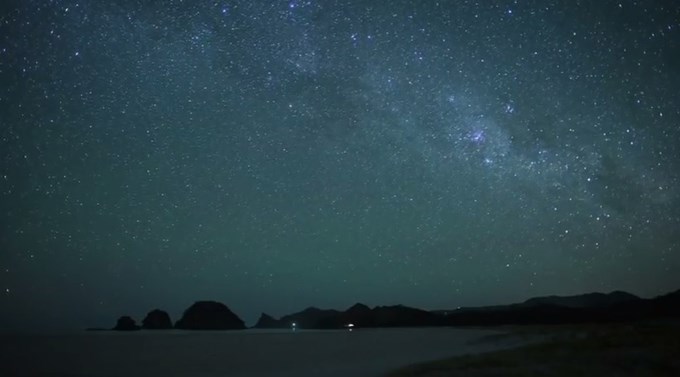The International Dark-Sky Association (IDA) has designated Aotea Great Barrier Island an International Dark Sky Sanctuary.
It is the first island in the world, and one of only three places, to receive this status.
The other two sanctuaries are in New Mexico and Chile.
Stellar conditions
With much of Great Barrier Island ’off the grid’, light pollution is minimal, allowing for a good view of the spectacular night sky.
The IDA established the International Dark Sky Places conservation programme in 2001 to recognise ‘excellent stewardship of the night sky’. Designations are based on scientifically measured darkness of sky as well as stringent outdoor lighting standards and innovative community outreach.
The application for the international sanctuary status was lodged by Great Barrier Local Board with support from Auckland Council, Auckland Tourism, Events & Economic Development (ATEED), the Department of Conservation, iwi, the Auckland Astronomical Society and Auckland Central MP Nikki Kaye.
Environmental initiatives flourish on Great Barrier
Auckland Mayor Phil Goff says Great Barrier Island is home to a community focused on protecting and preserving its stunning natural beauty, which makes it the ideal location to receive International Dark Sky Sanctuary status.
“Great Barrier Island is a place of rugged beauty and untouched wilderness, and is one of the most tranquil and unspoilt places in the wider Auckland region,” he says.
“This status will help protect its dark sky and provide impetus for Aotea Great Barrier Island to advance a number of complementary initiatives, including showcasing alternative energy use as well as provide a new pathway for economic development. This IDA status will help the island attract more visitors, including ecotourists, astro-photographers, scientists and students.”
Local residents and dark sky enthusiasts, Gendie and Richard Somerville-Ryan, worked with Auckland astronomer, Nalayini Davies, to gather the evidence required to support the application, undertaking the first set of measurements on the new moon night in September 2016.
“Our measurements showed what we had all suspected – the Great Barrier Island skies are as good as it gets,” Somerville-Ryan says.
“Achieving this status will protect the island’s night skies and bring the island to the notice of astro-photography enthusiasts from around the world.”


